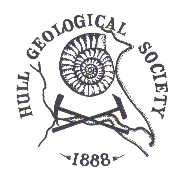
The Flamborough Quaternary Research Group
"So......
how many “Bridlington Crags” are there? Ongoing work with the Penny Collection"
by
Rodger Connell, Stuart Jones, Derek Gobbett and Mike Horne.
(abstract of a talk given to Hull Geological Society on 10th December 2013).
Masses
of shell rich marine clays (and associated glauconitic sands) within, what is
now termed, the Basement Till of Holderness were first documented by the eminent
geologists Sedgwick, Phillips and Lyell in the 1820s and 1830s at Bridlington.
At the time it was thought the deposit might be of similar age to the
Pliocene/Early Pleistocene Crags (shelly sands and gravels) of East Anglia –
hence the name Bridlington Crag. Lamplugh was fortunate to observe the deposit
first hand in the 1880s when Bridlington north shore was stripped of sand after
storms. Three to four tons of the clay was collected by a Mr Headley at the time
and an extensive macro and micro fauna was recovered. Lamplugh also noted a mass
of clay with a “peaty seam” which he believed was a terrestrial deposit. Whilst
some of the material had a range of small clasts within it Lamplugh only
recorded small phosphatic “lumps” from the main clay masses which he considered
to be derived from the Speeton Clay. He interpreted the masses of marine clay to
have been deposited in an arctic environment which were ripped from the sea
floor by the ice sheet that deposited the Basement Till. Much later Catt and
Penny (1966) considered the rafts to date from the late Hoxnian, with the
enclosing Basement Till believed to be of “Wolstonian” age, the glaciation
preceding the Ipswichian (Sewerby) interglacial. A number of masses of
Bridlington Crag were again exposed on the north shore in 1964 after storms.
Palynological and microfossil (coccoliths) analyses from samples collected then
were published in the 1970s. The coccolith assemblage indicated derivation from
restricted Kimmeridge Clay to Chalk bedrock sources and the palynology an Early
Pleistocene date. As yet unpublished in detail amino acid analyses from shells
from the same exposures also suggest an Early or Early Middle Pleistocene date
for the sediment. Bulk samples of the material collected from the Bridlington
exposures in 1964 are curated in the Penny Collection at Hull University and in
the Hull and East Riding Museum. Recent work has confirmed the very limited
clast assemblage in the Bridlington material and new palynological analyses are
being undertaken to help clarify the age and provenance of the deposit.
Similar erratic masses (rafts) of shelly clay are also known from within the
Basement Till at Dimlington, south Holderness. Erratic clasts and shells
collected from a large raft exposed in the 1950s and 60s are curated in the
Penny Collection, University of Hull. The macro and micro fauna is generally
considered to be similar to that recovered from the Bridlington material, but in
contrast the collection contains a rich and varied set of erratic pebbles and
cobbles. Igneous, metamorphic and sedimentary lithologies are present, with some
igneous rocks definitely from the Oslo Graben in southern Norway. The shells in
the extant collection contain some species that may have required different
environmental conditions suggesting that material from varying environments may
be incorporated into the rafts. Work is ongoing to further identify the sources
of the erratic rocks from Dimlington and sediment enclosed by some of the shells
will be used for palynological analyses. It is possible that the material from
the two sites either have a different provenance or a different age.
Lamplugh recorded a third site in 1890 with an arctic macrofauna and
apparently enclosed within the Basement Till in the eastern cliffs at South
Landing on Flamborough Head. Recently collected samples from this poorly exposed
material suggest it does resemble Bridlington Crag lithologies from the other
two sites. Interestingly the few clasts recovered from the sediment are
dominated by greywackes possibly from southern Scotland. Again palynological
analyses are being undertaken to help clarify the age and provenance of the fine
grained sediment. At this site the sediment is apparently associated with till
that resembles Skipsea Till at sites to the south. The FQRG has obtained a
preliminary OSL age estimate of ~55.7 ka from sands beneath the deposit
suggesting that the South Landing site is within an assemblage that dates to the
last, Devensian, glaciation rather than one that preceded the Ipswichian
interglacial.
All three sites considered to belong to the “Bridlington Crag” appear to have
significantly different clast assemblages. Does this indicate different
provenance or age? Whilst at two of the sites (Bridlington and Dimlington) the
erratic rafts are within the Basement Till at the third site (South Landing) the
material is within a Devensian context. Palynological analyses are being
undertaken to determine if there are similar age diagnostic taxa at the three
sites. Unfortunately we have so far failed to discover the mollusc species
required for modern amino acid geochronology in the collections, though work on
the microfauna (foraminifers or ostracods) may be possible in the future. Work
continues on the clast assemblages, macro and microfaunas and floras in an
attempt to clarify the palaeoenvironment, age and provenance of the material
termed the “Bridlington Crag”.'
Copyright
- Hull Geological Society 2025
HOME
Copyright Hull Geological Society.
Registered
Educational Charity No. 229147

